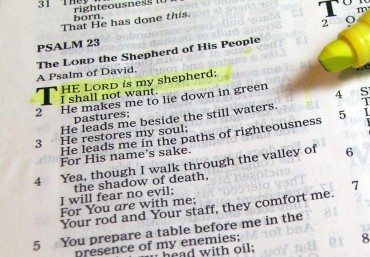 There’s a story in the Hebrew scriptures, about the people of Israel after they had escaped from Egypt. In the story, which is absurdly rich in symbolism and image, the people are making their way through the desert when their leader Moses climbs a mountain to commune with God.
There’s a story in the Hebrew scriptures, about the people of Israel after they had escaped from Egypt. In the story, which is absurdly rich in symbolism and image, the people are making their way through the desert when their leader Moses climbs a mountain to commune with God.
To cut a complicated narrative unreasonably short, the impatient Israelites get fed up waiting for Moses to return, and decide to melt their golden jewellery to create an idol – a golden calf, which they then proceed to worship.
Moses, who has spent 40 days on the mountain eventually returns to find all this going on, loses it a bit, and a load of the Israelites pop their clogs. When you read serious Jewish interpretations of the story, it grows more complex around the edges, considering the motivations of those who built the calf, and so on.
So here’s the thing: as with many Bible stories, there are two predictable dangers when we read the story: 1) The story is written off as complete nonsense: “It didn’t happen, and it has nothing to say to us.” 2) The story is taken totally literally, as though it is a modern historical account: “This is exactly what happened to a ‘real’ people, in a ‘real’ place, at a ‘real’ time.”
Neither of these two approaches manage to capture the complex subtleties of the story, which was almost certainly written down or collated from oral tradition as part of the process of nation building while the Israelites were in captivity a few centuries BCE. While this whole question – the historicity of the text – makes for fascinating reading and discussion, I’m not about to run through all that here.
I’m more interested in the question of the Golden Calf: what does it represent?
I think there’s a strong case to be made for the Golden Calf as representative of certainty.
Moses’ disappearance up the mountain was for ’40 days’ a term used to represent a long time. Faced with the disappearance of their spiritual leader, the people grew upset, and eventually chose what they felt to be a logical course of action.
“Give us a god to go before us,” they said, “for we don’t know what has come of this man Moses.” (Exodus 32:1)
What the people wanted was some sense of security, a kind of certainty that they could cling to. Moses, a man who had difficulty communicating at the best of times, had left them to wait for him while he communed with an invisible, unknown God. Would he ever return?
To put this in to a framework with which people who read this blog are familiar: Moses led the Israelites into a period of major league deconstruction. He took them out of the brutal certainties of Egypt, where they had suffered, but at least they knew what was what, and into the wilderness.
And then he had left them…
Extended uncertainty, lets be honest, really gets to you. It grates. ![]()
And after a while – a long time – they began to crave some sense of certainty. ‘It’s time to reconstruct, to rebuild: give us a god to go before us…’
When they eventually came to act upon this craving, they constructed something which would have been culturally very familiar – and they gave a lot to it – this was no petty endeavour. A lot of gold went into making that statue.
This is precisely what happens to many who try to find some solid ground on which to stand after deconstruction, they go for something familiar, they invest in it, they give it their all, and in the end they create another idol.
I feel huge sympathy for the Israelites, mainly because I think I may have felt just as they did. And yet from the benefit of some elevation, looking down from Mount Sinai, Moses who was a somewhat absolutist sort, could see the futility of this search for comfort. And lost his rag. Understandable yes, but harsh, Moses, harsh: dwelling in uncertainty is difficult.
Are you struggling with deconstruction? Taking apart beliefs and ideas with which you’ve lived for years?
Are you considering reconstruction, and wondering if that is right for you, now? I’m running a retreat for people like you in November, you can book here. Or alternatively, contact me to find out about other ways I can help.

